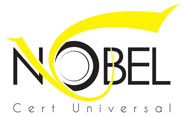ISO 44001 Collaborative business relationship management systems – Requirements and framework is an international standard published 1 March 2017 by the International Organisation for Standardisation. It is based on British Standards BS 11000, initially developed from 2006 as PAS 11000 (2006). ISO 44001 is now aligned to the high level structure that covers all ISO management standards, and incorporates the eight stage life cycle model that was the basis for BS 11000 to help business partners maximize the value of collaborative working:
- Operational awareness
- Knowledge
- Internal assessment
- Partner selection
- Working together
- Value creation
- Staying together
- Exit strategy implementation
BS 11000 was formally launched at the House of Lords in London on 7 December 2010.
Build and benefit from partnerships that do nothing but add value to your business. The BS 11000 standard gives you the knowhow to get the most from collaborative working – making sure you benefit from shared resources, costs, opportunities and contacts. Whatever the size or nature of your business, BS 11000 gives your business a bigger impact with bigger benefits.
What is BS 11000 Collaborative Business Relationships?
BS 11000 allows you to collaborate successfully. It outlines different approaches to collaborative working that have proven to be successful in businesses of all sizes and sectors. BS 11000 shows you how to eliminate the known pitfalls of poor communication by defining roles and responsibilities, and creating partnerships that do nothing but add value to your business.
What are the benefits of BS 11000 Collaborative Business Relationships?
- Collaborate successfully with your chosen partners
- Create a neutral platform for mutual benefit with business partners
- Define roles and responsibilities to improve decision making processes
- Share cost, risks, resources and responsibilities
- Provide staff with wider training opportunities
- Build better relationships that lead to improved results
This standard is split into the following core elements:
- Assessing your company– Understanding the readiness at a cultural and structural level to be able to operate a collaborative relationship approach. This is detailed and relationship specific, considering the practical elements the company should address before entering into relationship.
- Relationship assessment and selection– The process by which the company considers who it should have a relationship with. In cases where this is not optional, how to prepare to work with companies that.
- Managing relationships– Consistently monitoring and improving the relationships with all parties. Achieved through the joint development and use of techniques such as service level agreements (SLAs), key performance indicators.
- Exiting relationships– Having clear steps as to how the relationship will end. Ensuring continuity for your business and planning to ensure communication and execution of a relationship exit does not undermine key deliverables.

